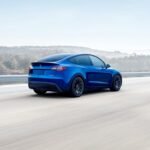Tesla has been facing backlash from millions of car owners as it still has not addressed the issue with its ‘HW3’ system, despite admitting that the hardware won’t support self-driving capabilities. The automaker seems to be hoping that customers will opt to buy new cars instead of addressing the issue at hand.
The timeline of Tesla’s Full Self-Driving (FSD) promises dates back to 2016 when the company announced that all vehicles produced thereafter would be capable of achieving Full Self-Driving with future software updates. This promise was made with the introduction of the HW2.5 self-driving hardware suite, which included cameras, radar, and a self-driving computer. CEO Elon Musk had warned that the system might require a computer upgrade in the future, which Tesla would provide for free.
In March 2019, Tesla started producing cars with a new ‘HW3’ computer and began upgrading HW2.5 cars to this new system. However, by early 2023, Tesla had not delivered on its self-driving promises and introduced a new ‘HW4’ suite with a more powerful computer and new cameras. Despite claiming that HW3 vehicles would still achieve unsupervised self-driving capabilities with software updates, it became evident that the HW3 system was reaching its limits.
It wasn’t until January 2025 that Musk finally admitted that the HW3 system would not support full self-driving capabilities and that an upgrade would be necessary. However, more than four months later, Tesla has not revealed a plan to address the issue for HW3 owners who had purchased the Full Self-Driving package, some as long as nine years ago. The HW4 computer cannot be installed in HW3 vehicles, leading to uncertainty about the possibility of a retrofit with the new HW5 computer.
The situation has led to several lawsuits related to Tesla’s self-driving claims, including the issue with HW3. It is speculated that there could be billions of dollars in settlements over this issue, but it may take years to resolve. In the meantime, Tesla’s focus seems to have shifted from delivering promised capabilities in consumer vehicles to an internal fleet providing a ride-hailing service in a geo-fenced area with teleoperation support.
Overall, the lack of a plan to address the HW3 issue has left many Tesla owners frustrated and uncertain about the future of their vehicles. It remains to be seen how Tesla will handle this situation and whether owners will ultimately need to consider purchasing new vehicles to access the promised self-driving capabilities.







